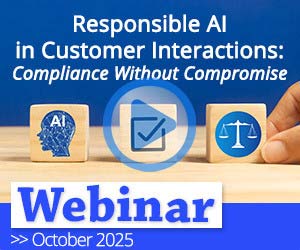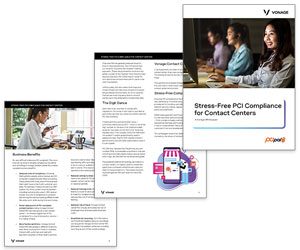When people think of fraud, their minds usually go to high-tech hacking or dodgy emails about winning the lottery. But one of the lesser-talked-about hotspots for fraud is… You’ve guessed it… Your contact centre!
Yep, those customer service calls and chats that are supposed to solve problems can also be the perfect entry point for fraudsters to wreak havoc. And the scary part? Many organizations don’t realize just how vulnerable they are until it’s too late.
In this guide, we’ll walk you through five of the most common (and dangerous) types of contact centre fraud – along with practical ways to prevent them.
The 5 Most Dangerous Types of Contact Centre Fraud
1. Social Engineering – The Fraudster’s Favourite Party Trick
What Is It?
Social engineering is when a fraudster poses as a legitimate customer and manipulates an agent into giving away sensitive information or access.
Contact centres are a dream playground for these tactics. Unlike brute-force hacks or malware attacks, this kind of fraud exploits trust, empathy, and human error.
In a contact centre environment, social engineering might involve a fraudster pretending to be a customer who’s lost access to their account.
They often come across as desperate, charming, or even distressed, saying things like, “My phone was stolen – I need to reset everything now,” or “I’m travelling and can’t access my account, can you help?”
Or maybe they pose as a colleague from another department, urgently requesting information to “resolve a compliance issue”.
Sometimes they play the long game – calling multiple times to build rapport with agents and gather bits of information each time, piecing together a full profile like a jigsaw.
Often, it’s not even just one person involved, but an organized ring of fraudsters, each playing a role in the con.
They’re not hacking your systems – they’re hacking your people! And it works because agents are trained to be helpful.
How To Avoid It:
- Stick to the script – Always follow a strict identity verification process, even when the caller is insistent or emotionally persuasive. Make it non-negotiable.
- Train for manipulation awareness – Regularly educate agents on emotional manipulation tactics and give them examples of suspicious behaviour.
- Limit what agents can see – Role-based access ensures that even if someone is duped, the fraudster can’t access everything in one go.
- Escalation is your friend – Encourage agents to escalate anything that feels off. A second opinion can stop a disaster before it starts.
2. Account Takeover (ATO) – The Silent Hijack
What Is It?
In an account takeover, a fraudster gains access to a genuine customer’s account – usually using stolen credentials.
Once they’re in, they can change passwords, drain funds, make unauthorized purchases, or simply snoop around gathering more data.
ATO often flies under the radar because the fraudster is using real login information. To the system, everything looks normal.
How To Avoid It:
- Use Multi-Factor Authentication (MFA) – Require more than just a password to access accounts. One-time codes, biometric checks, or app confirmations add essential layers.
- Spot behaviour, not just credentials – Behavioural analytics can flag when something’s off – like logging in from a new device in a new location with strange activity patterns.
- Lock down after suspicious activity – Automatically trigger account locks or verification challenges after multiple failed login attempts or password reset requests.
- Keep audit trails – Ensure every action is logged so you can investigate quickly if something does slip through.
3. Phone Number Spoofing – The Trojan Horse Call
What Is It?
This is when a fraudster manipulates their caller ID to make it look like they’re calling from a legitimate, trusted number – often the customer’s own phone number.
Agents see the familiar number pop up and, assuming it’s genuine, relax their guard.
It’s a classic case of things not being what they seem.
How To Avoid It:
- Don’t trust caller ID alone – Make it crystal clear in your training: caller ID should never be the basis for identity verification.
- Add voice biometrics or passphrases – Use voice recognition or custom security passphrases to verify a caller’s identity, especially for high-risk accounts.
- Deploy spoofing detection software – These tools analyse call metadata in real time and can flag or block suspicious activity.
- Regularly audit your process – Do mystery calls to test how agents respond to spoofed numbers. It’s one of the quickest ways to spot weaknesses.
4. Refund Fraud – Polite Lies That Cost Millions
What Is It?
Refund fraud is when someone falsely claims they didn’t receive a product or service, or exaggerates a minor issue to get compensation. Sometimes, it’s opportunistic.
Other times, it’s highly organized and systematic – think fake shipping claims or repeated refund requests under different names.
Over time, these “little” scams can drain millions from an organization.
How To Avoid It:
- Tie refunds to evidence – Ask for delivery confirmation, photo evidence, or tracking numbers where possible. Don’t issue refunds without documentation unless absolutely necessary.
- Use customer profiles – A customer with repeated refund claims, or patterns across similar addresses, should trigger a review.
- Create a tiered process – Give frontline agents the authority to resolve small claims, but have anything above a certain threshold automatically escalated.
- Keep cross-team communication tight – Fraudsters often target multiple departments. Make sure your CRM flags repeat offenders across all contact points.
5. IVR Mining – The Data Gold Rush
What Is It?
Fraudsters love IVR (interactive voice response) systems because they’re automated, predictable, and often overlooked when it comes to fraud defence.
In IVR mining, fraudsters input combinations of personal data to test what sticks – like an account number and DOB – to confirm what data is correct.
It’s low-effort and low-risk for them, but extremely damaging for you.
How To Avoid It:
- Limit input attempts – Set strict thresholds on how many attempts a user gets before being locked out or flagged.
- Monitor patterns – Too many calls from the same number? Too many failed inputs in a short timeframe? That’s a red flag.
- Use anomaly detection – Integrate AI tools that can flag bot-like behaviour, such as IVR attempts at odd hours or in rapid succession.
- Treat your IVR like a digital storefront – Just because it’s automated doesn’t mean it’s secure by default. Regularly audit and update it with fraud prevention in mind.
You Don’t Have to Choose Between CX and Fraud Prevention
Fraud is getting smarter. And with the human element involved, contact centres can sometimes feel like an easy target.
But here’s the good news: you don’t have to choose between customer experience and fraud prevention.
The trick is layering your defences without overwhelming your team or your customers. Think of it like building a house with locks on every door, not just the front one.
With the right training, tools, and mindset, your contact centre can stay friendly, helpful – and fraud-resistant. And in a world where trust is everything, keeping your customers safe is the biggest win of all.
If you are interested in finding out more about contact centre fraud and security, read these articles next:
- 5 Examples of Contact Centre Fraud – And How to Prevent Them!
- Top Call Centre Security Challenges and How to Fix Them
- What Are the Best Security Questions for Call Centres?
Author: Stephanie Lennox
Reviewed by: Jo Robinson
Published On: 1st Jul 2025 - Last modified: 15th Sep 2025
Read more about - Call Centre Management, Compliance, Management Strategies, Security and Fraud, Stephanie Lennox, Top Story


















